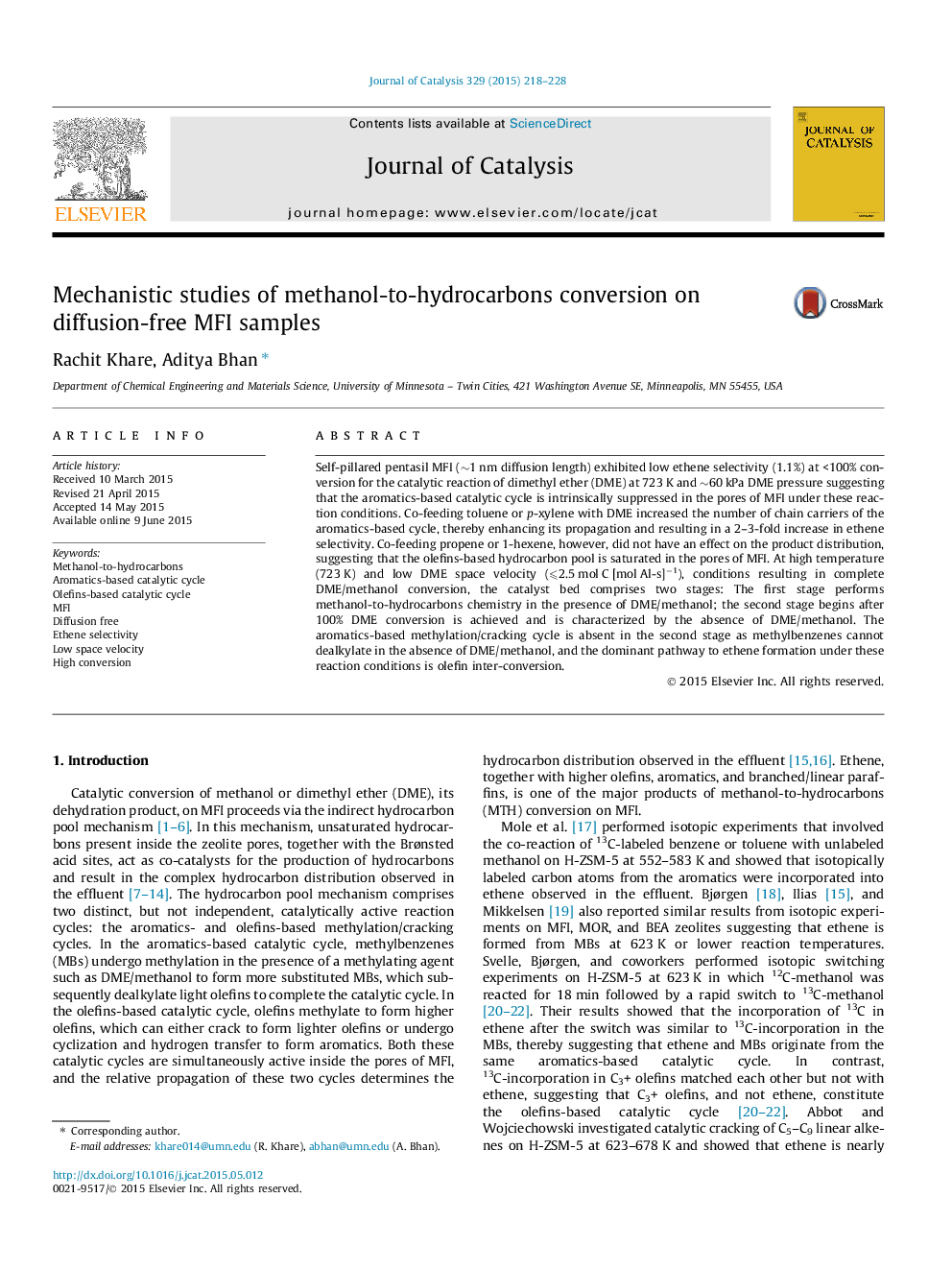| کد مقاله | کد نشریه | سال انتشار | مقاله انگلیسی | نسخه تمام متن |
|---|---|---|---|---|
| 60810 | 47548 | 2015 | 11 صفحه PDF | دانلود رایگان |

• Methanol conversion on diffusion-free MFI results in low (∼1%) ethene selectivity.
• Aromatic cycle suppressed in diffusion-free MFI due to low methylbenzene concentration.
• 100% conversion eliminates methylation; only olefin inter-conversion occurs downstream.
• Aromatics-based catalytic cycle is shut down in the absence of DME/methanol.
Self-pillared pentasil MFI (∼1 nm diffusion length) exhibited low ethene selectivity (1.1%) at <100% conversion for the catalytic reaction of dimethyl ether (DME) at 723 K and ∼60 kPa DME pressure suggesting that the aromatics-based catalytic cycle is intrinsically suppressed in the pores of MFI under these reaction conditions. Co-feeding toluene or p-xylene with DME increased the number of chain carriers of the aromatics-based cycle, thereby enhancing its propagation and resulting in a 2–3-fold increase in ethene selectivity. Co-feeding propene or 1-hexene, however, did not have an effect on the product distribution, suggesting that the olefins-based hydrocarbon pool is saturated in the pores of MFI. At high temperature (723 K) and low DME space velocity (⩽2.5 mol C [mol Al-s]−1), conditions resulting in complete DME/methanol conversion, the catalyst bed comprises two stages: The first stage performs methanol-to-hydrocarbons chemistry in the presence of DME/methanol; the second stage begins after 100% DME conversion is achieved and is characterized by the absence of DME/methanol. The aromatics-based methylation/cracking cycle is absent in the second stage as methylbenzenes cannot dealkylate in the absence of DME/methanol, and the dominant pathway to ethene formation under these reaction conditions is olefin inter-conversion.
Figure optionsDownload high-quality image (267 K)Download as PowerPoint slide
Journal: Journal of Catalysis - Volume 329, September 2015, Pages 218–228